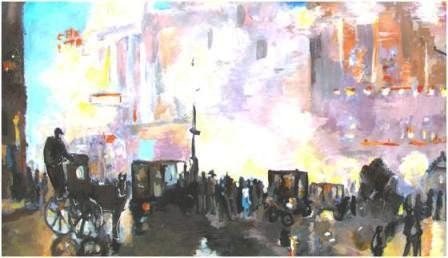Drury Lane Theater was built some 200 years ago and is the fourth building on this site. The architect was Benjamin Wyatt. The canopy on the left hand side was added ten years after the building was completed. Part of the stage lifting equipment, still working today, was used during Gustav Mahler’s productions. Today the work of Augustus Henry Glossop Harris (1852-1896) is recognized by a sculpture; it is fixed to the front wall of the main entrance of The Drury Lane Theatre.
Conducted by Gustav Mahler
- 1892 Opera London 13-06-1892, Theatre Royal Drury Lane, Siegfried.
- 1892 Opera London 18-06-1892, Theatre Royal Drury Lane, Tristan.
- 1892 Opera London 25-06-1892, Theatre Royal Drury Lane, Tristan.
- 1892 Opera London 27-06-1892, Theatre Royal Drury Lane, Rheingold.
- 1892 Opera London 02-07-1892, Theatre Royal Drury Lane, Fidelio.
- 1892 Opera London 04-07-1892, Theatre Royal Drury Lane, Walkure.
- 1892 Opera London 09-07-1892, Theatre Royal Drury Lane, Tristan.
- 1892 Opera London 11-07-1892, Theatre Royal Drury Lane, Siegfried.
- 1892 Opera London 18-07-1892, Theatre Royal Drury Lane, Gotterdammerung.
The Theatre Royal, Drury Lane, commonly known as Drury Lane, a West End theatre, is a Grade I listed building in Covent Garden, London. The building faces Catherine Street (earlier named Bridges or Brydges Street) and backs onto Drury Lane. The building is the most recent in a line of four theatres which were built at the same location, the earliest of which dated back to 1663, making it the oldest theatre site in London still in use. According to the author Peter Thomson, for its first two centuries, Drury Lane could “reasonably have claimed to be London’s leading theatre”. For most of that time, it was one of a handful of patent theatres, granted monopoly rights to the production of “legitimate” (meaning spoken plays, rather than opera, dance, concerts, or plays with music) drama in London.
London. Theatre Royal Drury Lane. Drury Lane at the time of Mahler’s visit- the streets were busy with pedestrians and horse drawn carriages.
The first theatre on the site was built at the behest of Thomas Killigrew in the early 1660s, when theatres were allowed to reopen during the English Restoration. Initially known as “Theatre Royal in Bridges Street”, the theatre’s proprietors hired a number of prominent actors who performed at the theatre on a regular basis, including Nell Gwyn and Charles Hart. In 1672 the theatre caught fire and Killigrew built a larger theatre on the same plot, renamed the “Theatre Royal in Drury Lane”; it opened in 1674.
This building lasted nearly 120 years, under the leaderships of Colley Cibber, David Garrick and Richard Brinsley Sheridan, the last of whom employed Joseph Grimaldi as the theatre’s resident Clown. In 1791, under Sheridan’s management, the building was demolished to make way for a larger theatre which opened in 1794. This new Drury Lane survived for 15 years before burning down in 1809. The building that stands today opened in 1812.
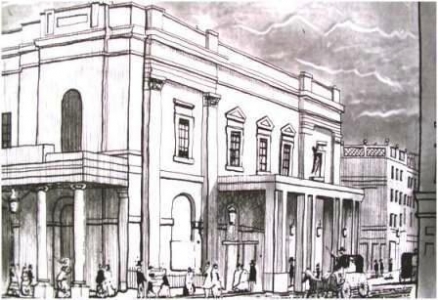
London. Theatre Royal Drury Lane.
Present building (opened in 1812)
The present Theatre Royal in Drury Lane, designed by Benjamin Dean Wyatt on behalf of the committee led by Whitbread, opened on 10 October 1812 with a production of Hamlet featuring Robert Elliston in the title role. The new theatre made some concessions toward intimacy, seating 3,060 people, about 550 fewer than the earlier building (though this size is still considered an extremely large theatre).
On 6 September 1817, gas lighting was extended from the audience area to the stage, making it the first British theatre to be gaslit throughout. In 1820 the portico that still stands at the theatre’s front entrance on Catherine Street was added, and in 1822 the interior underwent a significant remodelling. The colonnade running down the Russell Street side of the building was added in 1831.
2016. London. Theatre Royal Drury Lane.
2016. London. Theatre Royal Drury Lane.
2016. London. Theatre Royal Drury Lane.
2016. London. Theatre Royal Drury Lane.
2016. London. Theatre Royal Drury Lane.
2016. London. Theatre Royal Drury Lane.
2016. London. Theatre Royal Drury Lane.
2016. London. Theatre Royal Drury Lane.
2016. London. Theatre Royal Drury Lane.
2016. London. Theatre Royal Drury Lane.
2016. London. Theatre Royal Drury Lane.
2016. London. Theatre Royal Drury Lane.
2016. London. Theatre Royal Drury Lane.
Productions relying more on scenery and effects than on dialogue and acting remained commonplace in the new facility. The 1823 production of Cataract of the Ganges had a finale featuring a horseback escape up a flowing cataract “with fire raging all around.” Effects for an 1829 production were produced by hydraulic apparatus that reportedly could discharge 39 tons of water.
There were those concerned that the theatre was failing in its role as one of the very few permitted to show legitimate drama. Management of the theatre after it reopened in 1813 fell to Samuel James Arnold, overseen by an amateur board of directors and a subcommittee focusing on the theatre as a centre for national culture. (Lord Byron was briefly on this subcommittee, from June 1815 until leaving England in April 1816.)
Actor Edmund Kean was the on-stage highlight; like Macklin before him, he made his reputation as Shylock, premiering in the role in 1814. Kean remained until 1820 through praise and notorious disputes with local playwrights such as Charles Bucke.
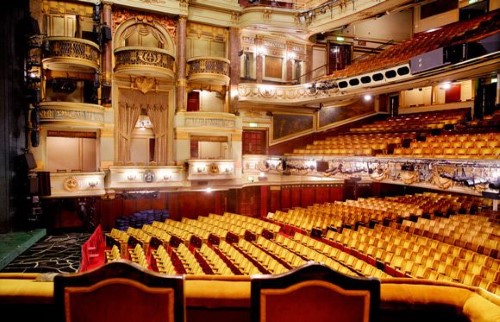
London. Theatre Royal Drury Lane.

London. Theatre Royal Drury Lane.
Elliston leased the theatre from 1819 until he went bankrupt in 1826. An American, Stephen Price, followed (1826–1830); then through most of the remainder of the 19th century, Drury Lane passed quickly from one proprietor to another. A colonnade was added to the Russell Street frontage, in 1831, by architect Samuel Beazley. In 1833, Alfred Bunn gained control of both Drury Lane and Covent Garden, managing the former from 1833 to 1839, and again from 1843 to 1850. Following the lead of the Lyceum Theatre, London, Bunn championed English opera, rather than the Italian operas that had played earlier at the theatre.
These included Fair Rosamond and Farinelli by John Barnett; a series of twelve operas by Michael Balfe including The Maid of Artois and The Bohemian Girl; Maritana and others by William Vincent Wallace and several by Julius Benedict.
In 1837, actor-manager Samuel Phelps (1804–1878) joined the company at Drury Lane, appearing with William Charles Macready, the gifted actor-manager in a number of Shakespeare plays. He also created the role of Captain Channel in Douglas Jerrold’s melodrama, The Prisoner of War (1842), and of Lord Tresham in Robert Browning’s A Blot in the ‘Scutcheon (1843). Macready was briefly manager in 1841–1843, putting significant reforms in place. Nevertheless, most productions there were financial disasters.
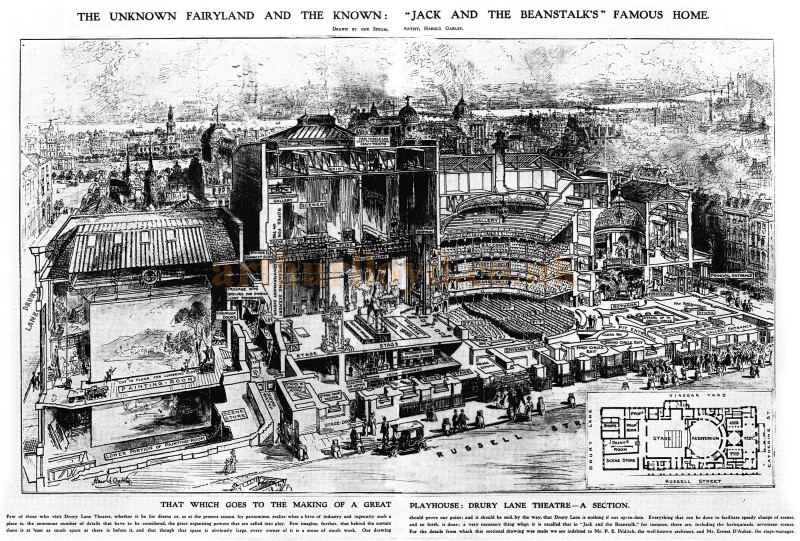
London. Theatre Royal Drury Lane. A sketch of the original auditorium, stage, FOH, and backstage of the Fourth Theatre Royal Drury Lane in 1910 during the run of the Pantomime ‘Jack and the Beanstalk’ – Illustrated London News 1910.
The theatrical monopoly first bestowed by Royal Letters Patent 183 years earlier was abolished by the Theatres Act 1843, but the patent had been largely toothless for decades and this had little immediate effect. On the other hand, other theatres, used to presenting musical entertainments, continued to do so, and Drury Lane continued as one of the most accepted venues for legitimate theatre.
The 19th-century run of financial and artistic failures at Drury Lane was interrupted by four plays produced over a twenty-five-year period by the actor-playwright Dion Boucicault: The Queen of Spades (1851), Eugenie (1855), Formosa (1869), and The Shaughraun (1875). But this period of general decline culminated with F. B. Chatterton’s 1878 resignation; in his words, “Shakespeare spells ruin, and Byron bankruptcy.”
During the 19th century, Drury Lane staged ballet as well, with performers including Italy’s Carlotta Grisi. One famous musical director of Drury Lane was the eccentric French conductor and composer of light music Louis-Antoine Jullien (1812–1860), who successfully invited Berlioz to visit London and give concerts in the Theatre.
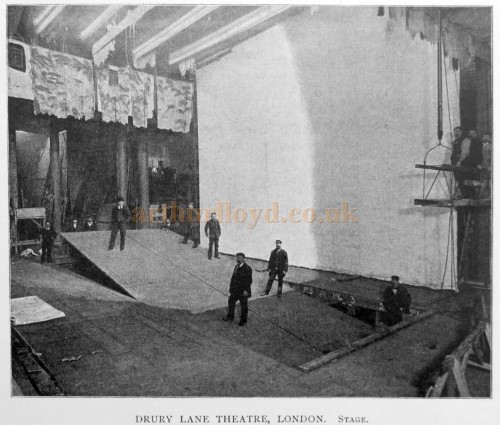
1890s. London. Theatre Royal Drury Lane. The Drury Lane lifts in action in the late 1890s. Part of the stage lifting equipment, still working today, was used during Gustav Mahler’s productions.
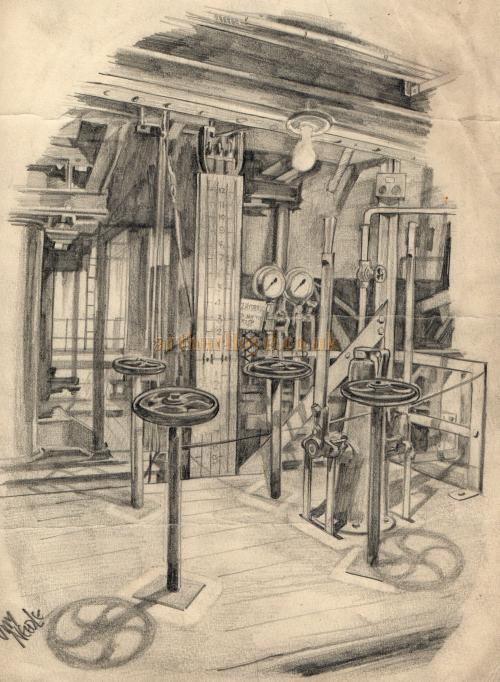
London. Theatre Royal Drury Lane. Stage lifting equipment.
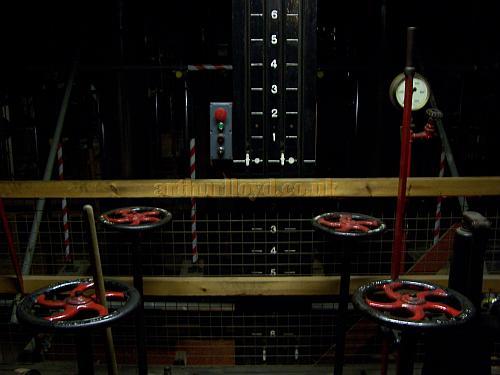
London. Theatre Royal Drury Lane. Stage lifting equipment.
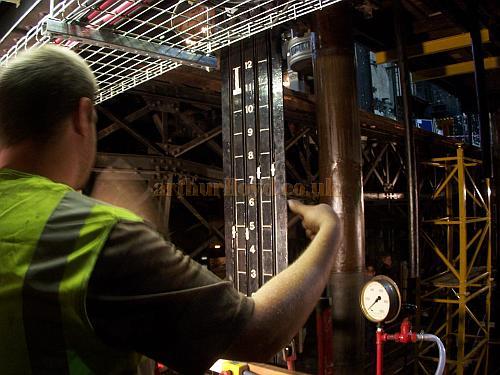
London. Theatre Royal Drury Lane. Stage lifting equipment.
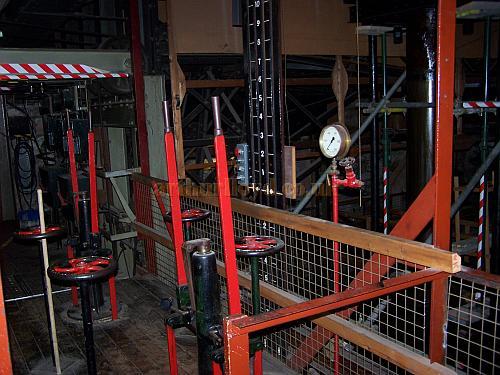
London. Theatre Royal Drury Lane. Stage lifting equipment.
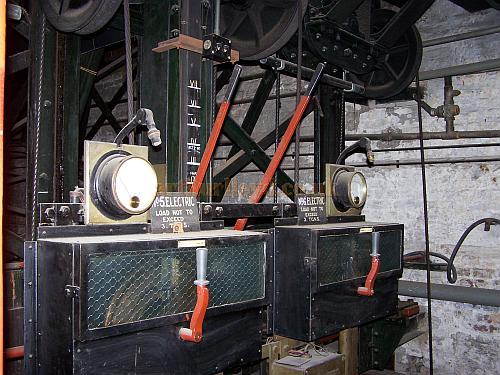
London. Theatre Royal Drury Lane. Stage lifting equipment.
The house’s fortunes rose again under the management of Augustus Harris from 1879. In the 1880s and 1890s, the theatre hosted many of the productions of the Carl Rosa Opera Company. Harris focused increased resources on the theatre’s annual pantomime, beginning at Christmas 1888, adding a well-known comedian, Dan Leno. These spectacular Christmas shows were a major success, often playing into March. They were choreographed by the theatre’s dance master, John D’Auban. Many of the designs under Harris were created by the imaginative designer C. Wilhelm, including the spectacular drama, Armada (1888), and many of the pantomimes.
Productions relying on spectacle became the norm at Drury Lane under the managements first of Harris, from 1879 to 1896, and then of Arthur Collins from 1896 to 1923. Examples include the 1909 play, The Whip, which featured not only a train crash, but also twelve horses recreating the 2,000 Guineas Stakes on an on-stage treadmill.

1892. London. Theatre Royal Drury Lane. A sketch of the original auditorium and stage of the Fourth Theatre Royal Drury Lane as seen from the uppermost box during a performance of ‘Little Bo Peep, Little Red Riding Hood, and Hop-O’ My Thumb’ in 1892. The scene on stage was ‘The Grand Hall of a Million Mirrors at the Prince’s Palace – From the Graphic, 31st December 1892.
The last major interior renovation was in 1922 under the ownership of managing director Sir Alfred Butt at a cost of ?150,000, leaving a four-tiered theatre able to seat just over 2,000 people. It was decorated with one of the most notable interiors produced by the specialist ornamental plasterwork company of Clark and Fenn. Composer and performer Ivor Novello, immensely popular in his time though little-remembered today, presented his musicals in Drury Lane from 1931 until the theatre was closed in 1939 because of the outbreak of the Second World War. During the war the theatre served as the headquarters for the Entertainments National Service Association; it sustained some minor bomb damage as well. The theatre reopened with Noël Coward’s Pacific 1860 in 1946.

